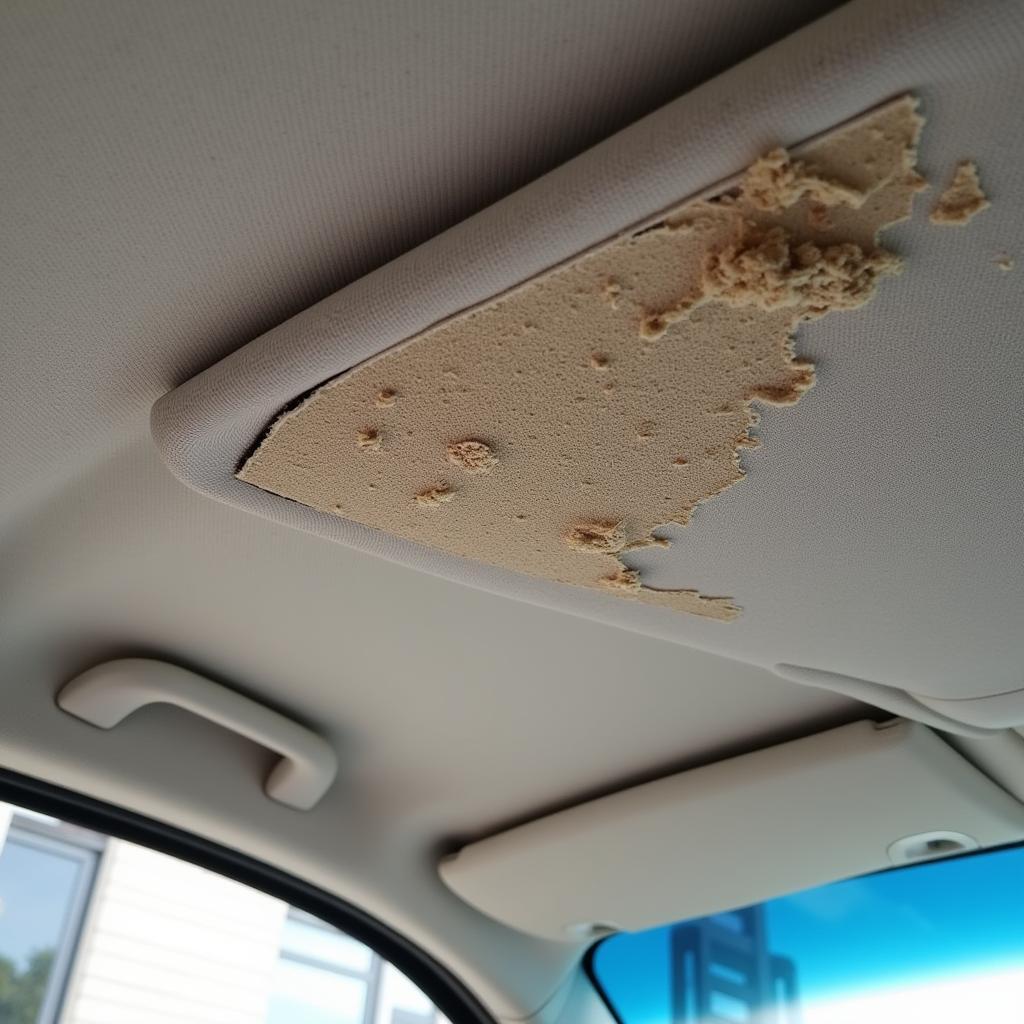Cracked leather car seats can detract from the overall appearance of your vehicle’s interior. Learning How To Fix Leather Cracks In Car upholstery can save you money and keep your car looking its best. This guide provides DIY solutions and professional tips for restoring your leather car seats.
Leather cracks can stem from various factors, including sun exposure, temperature fluctuations, and general wear and tear. Fortunately, most cracks can be addressed with the right approach. Before tackling the repair, clean the leather thoroughly using a dedicated leather cleaner. This removes dirt and grime, allowing the repair products to adhere effectively.
Understanding the Causes of Leather Cracks
Knowing why your leather is cracking in the first place can help you prevent future damage. One major culprit is prolonged exposure to sunlight. UV rays can dry out the leather, making it brittle and prone to cracking. Extreme temperatures, both hot and cold, also contribute to leather deterioration. Regular maintenance is key to preventing cracks, and addressing them early can prevent further damage.
Assessing the Damage and Choosing the Right Repair Method
Not all cracks are created equal. Small, superficial cracks can often be addressed with leather conditioners and fillers. Deeper cracks, however, might require more intensive methods, such as patching or professional reupholstering. For minor cracks, how to fix leather car seat cracks offers a step-by-step guide.
DIY Repair Methods for Leather Cracks
Several DIY methods can effectively address leather cracks. Leather fillers can be used to fill in small cracks and restore a smooth surface. Applying a leather conditioner after filling helps to rehydrate the leather and prevent further cracking. For deeper cracks, you might consider using a leather repair kit, which typically includes a patching compound and color-matching agents. If you have a cigarette burn, check out how to fix a cigarette burn in my car seat.
Step-by-Step Guide to Repairing Minor Leather Cracks
- Clean the affected area thoroughly with a leather cleaner.
- Apply a small amount of leather filler to the crack, using a spatula or your finger.
- Allow the filler to dry completely.
- Gently sand the filled area until smooth.
- Apply a leather conditioner to the repaired area and the surrounding leather.
“Regular cleaning and conditioning are crucial for preventing leather damage,” says John Davis, a seasoned automotive leather specialist. “Prevention is always better than cure when it comes to leather care.”
When to Seek Professional Help
While DIY methods can be effective for minor cracks, more severe damage might require professional intervention. If the cracks are extensive or the leather is significantly damaged, how to fix leather in a car offers insights into professional repair options. For ripped seats, see how to fix ripped seats in cars. If you’re dealing with tarnished leather, can you fix tarnished car leather provides valuable advice.
“For significant leather damage, professional repair or replacement might be the best course of action,” advises Sarah Miller, an experienced auto upholsterer. “Attempting complex repairs yourself can sometimes worsen the problem.”
In conclusion, knowing how to fix leather cracks in car interiors can save you money and maintain the aesthetic appeal of your vehicle. By understanding the causes of cracking, implementing preventive measures, and choosing the right repair method, you can keep your leather car seats looking their best for years to come. Contact us at AutoTipPro at +1 (641) 206-8880 or visit our office at 500 N St Mary’s St, San Antonio, TX 78205, United States for expert advice and assistance.






Leave a Reply